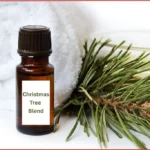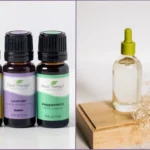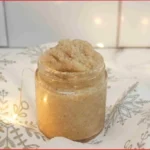Arnica, scientifically known as Arnica montana, has a long history of use in traditional herbal practices dating back centuries. It was valued by Native Americans, European herbalists, and homeopaths for its natural properties.
Today, arnica remains a popular ingredient for topical applications. Arnica in various formulations is widely used to support comfort after physical activity, calm the skin, and soothe areas of tension or minor irritation.
The good news, it’s easy to learn how to make arnica oil at home.
Table of Contents
Affiliate Disclosure: Some links on this site are affiliate links. I may earn a small commission if you purchase through them, at no extra cost to you. See the full affiliate disclosure.
What is Arnica Oil?

✨ Get 12 Free Holiday Diffuser Blends — Printable PDF
Instantly make your home smell like Christmas with these festive, ready-to-use recipes.
Arnica oil is made by infusing arnica flowers in a carrier oil, such as olive oil, sunflower oil, or coconut oil.
The beneficial properties of arnica are attributed to its naturally occurring compounds, including sesquiterpene lactones, helenalin, flavonoids, coumarins, and carotenoids.
These components are believed to contribute to arnica’s soothing and comfort-enhancing qualities.
When a carrier oil is infused with arnica flowers, it absorbs these compounds, taking on the beneficial properties of the plant.
This study explored the potential of arnica-based products and noted their promise in various topical applications. (Note: Always consult a healthcare provider before using herbal remedies regularly.)
Many people include arnica oil in their self-care routine to help soothe muscles after physical exertion or to support general skin wellness.
I discuss the benefits of arnica oil in more details below. For now, here’s how to make arnica oil.
Arnica Infused Oil Ingredients

- ½ cup Dried Arnica Flowers
- 1 cup Carrier Oil (see options below)
- Glass jar with a tight seal
- Cheesecloth or Fine Strainer
Dried arnica flowers are the key ingredient when making this infused oil. It’s important to use completely dried flowers to avoid moisture buildup, which could cause premature spoilage.
The carrier oil serves as the base for your infusion. There are several options, each with unique properties (see the detailed section below on choosing the best carrier oil for your skin type).
Use a clean glass jar with a tight seal for steeping the flowers in oil. The seal prevents contamination and ensures the infusion process runs smoothly. Avoid using plastic containers, as they may leach chemicals into the oil.
You will need a cheesecloth or fine strainer to strain the oil, separating the arnica flowers from the liquid after the infusion.
Best Carrier Oil to Use for Different Skin Types and Preferences
The choice of carrier oil can significantly impact the quality and benefits of your arnica-infused oil. Here are the best options based on skin types and preferences:
Jojoba Oil

Best for: All skin types, especially oily and acne-prone skin.
Properties: Jojoba oil is a lightweight, non-greasy oil that closely mimics the skin’s natural sebum. It is highly moisturizing, absorbs quickly, and balances oil production without clogging pores. Jojoba is an excellent option for oily or combination skin.
Drawbacks: Jojoba oil can be expensive, but its versatility and skin compatibility make it a worthwhile investment.
Sweet Almond Oil
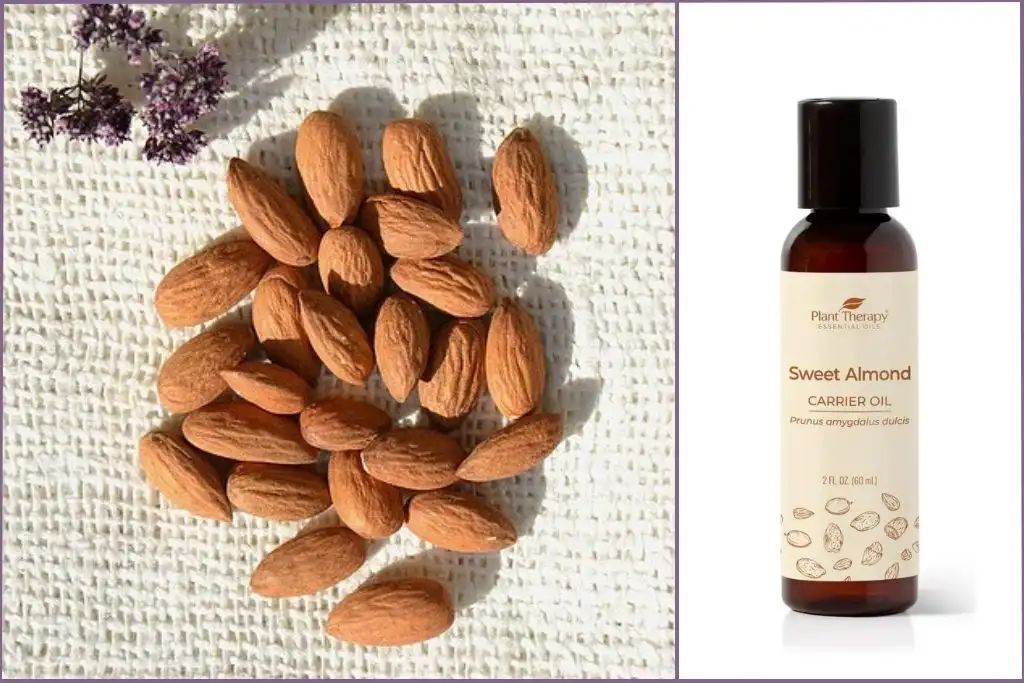
Best for: Normal to dry skin.
Properties: Packed with vitamins E and A, sweet almond oil is nourishing and soothing for normal to dry skin. It is lightweight and absorbs well, providing hydration without leaving a heavy residue. It’s also beneficial for improving skin tone and texture.
Drawbacks: Almond oil is not suitable for individuals with nut allergies and may not be as fast-absorbing as some lighter oils like jojoba.
Fractionated Coconut Oil
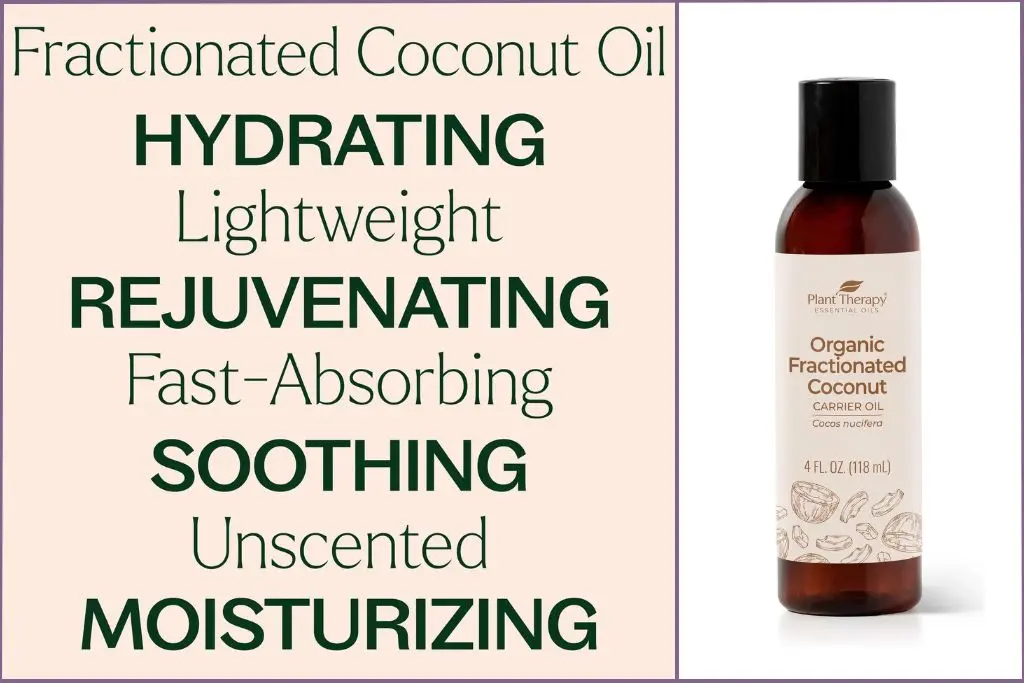
Best for: Dry or aging skin.
Properties: Fractionated coconut oil remains liquid at room temperature, making it easier to work with than solid coconut oil. It is deeply moisturizing and has antimicrobial properties, making it great for dry or mature skin. It also has a longer shelf life so your homemade arnica oil will last longer if infu
Drawbacks: Coconut oil may feel too heavy or greasy for oily or combination skin and can clog pores for those prone to acne.
Grapeseed Oil
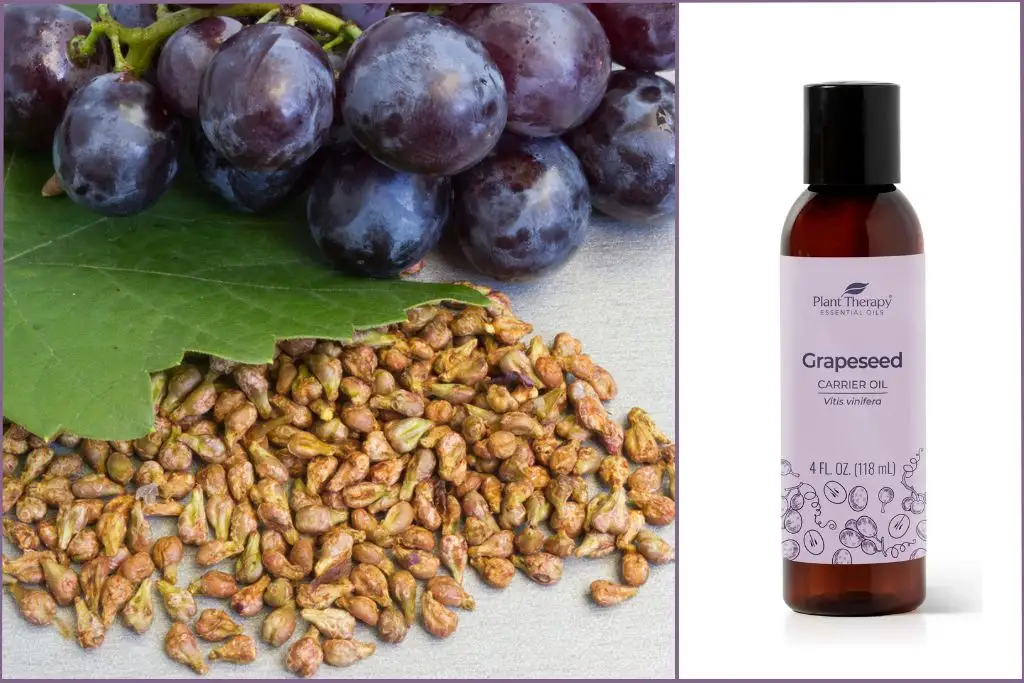
Best for: Oily or acne-prone skin.
Properties: Grapeseed oil is lightweight, fast-absorbing, and won’t clog pores, making it perfect for oily or blemish-prone skin. It is rich in linoleic acid, which can help reduce inflammation and prevent clogged pores, contributing to clearer skin.
Drawbacks: Grapeseed oil has a shorter shelf life than other carrier oils.
Avocado Oil
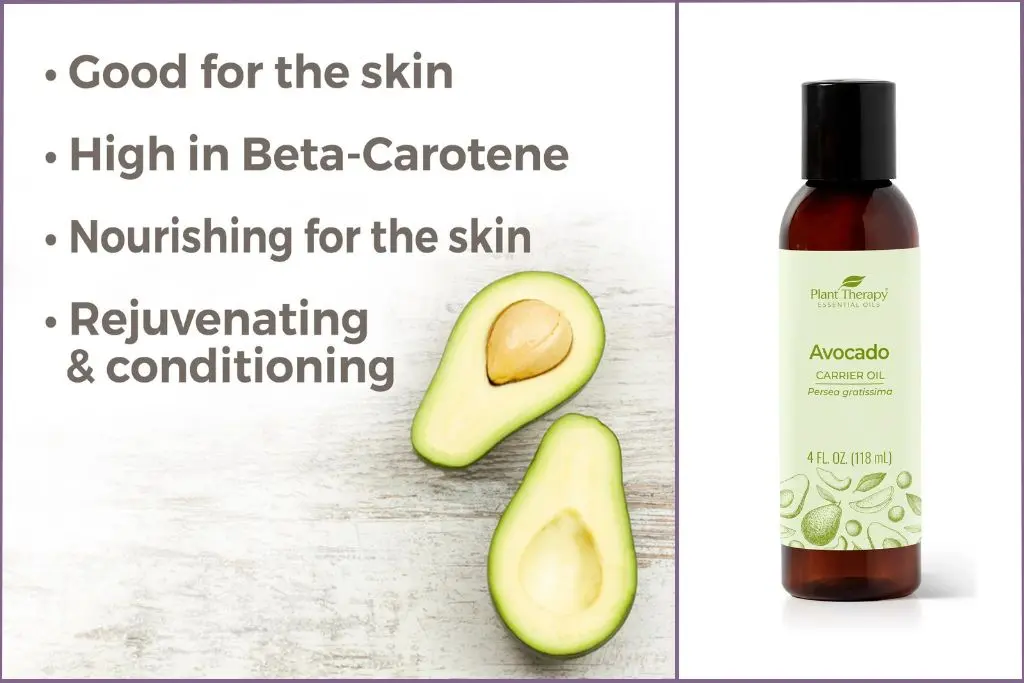
Best for: Extremely dry, mature, or damaged skin.
Properties: Avocado oil is rich in fatty acids and vitamins, which help restore skin elasticity and moisture. It’s an excellent choice for skin that needs extra nourishment, such as mature or sun-damaged skin.
Drawbacks: This oil is heavier and oilier, making it less suitable for those with oily or acne-prone skin. I used avocado oil in this recipe.
Olive Oil
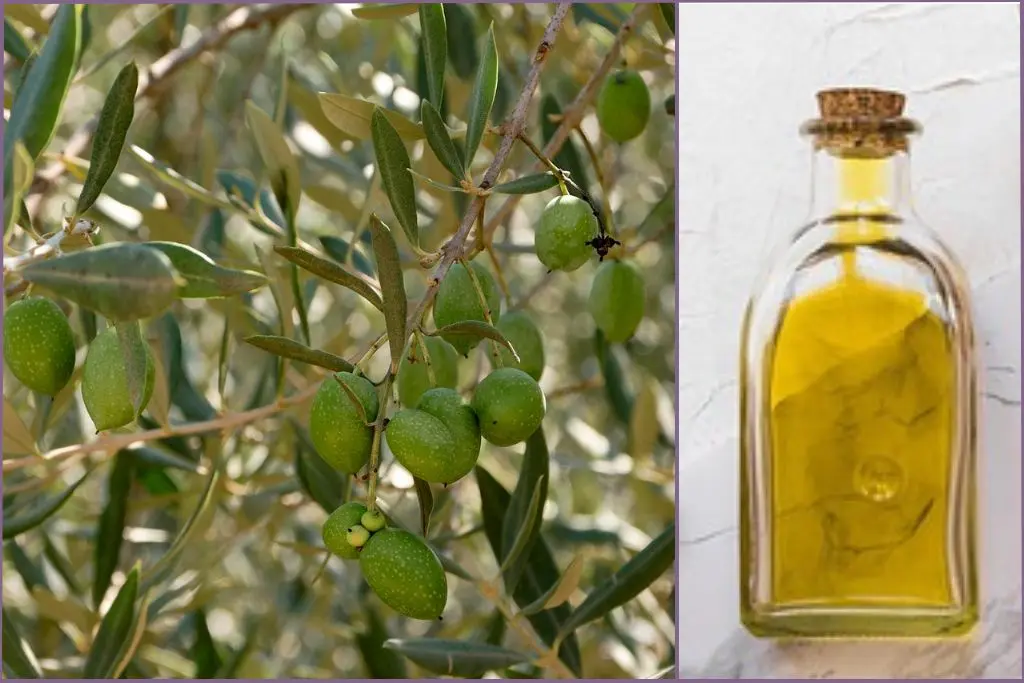
Best for: Dry or sensitive skin.
Properties: Olive oil is rich in antioxidants, vitamins A and E, and moisturizing compounds, making it a great choice for dry, rough, or irritated skin. It helps soothe and nourish the skin while promoting skin elasticity.
Drawbacks: Olive oil can feel heavy and greasy, which may not be ideal for oily skin or those who prefer a lighter texture.
Choosing the right carrier oil for your arnica infusion allows you to tailor the end product to meet your specific skin care needs.
How To Make Arnica Oil: Step-by-Step Infusion Process

Here’s a detailed guide on how to make arnica-infused oil using the stovetop low-heat method, with the sun infusion method as an alternative option.
Step 1: Fill A Glass Jar with Dried Arnica Flowers and Carrier Oil
Place completely dried arnica flowers in a clean glass jar, filling it about half to two-thirds full.
Pour your chosen carrier oil over the flowers until they are completely submerged. The oil must cover the flowers completely, as any exposed plant material can cause spoilage.
Step 2: Heat The Oil On The Stovetop (Low-Heat Method)
Place the jar with the flowers and oil into a saucepan filled with a few inches of water (creating a double boiler effect). Use a double boiler if you have one.
Heat the water over low heat to gently warm the oil. Do not rush this process. You don’t want the oil to boil or become too hot, as this can degrade the beneficial properties of the oil and the arnica.
Keep the oil warm for 2-3 hours, checking the temperature to ensure it stays low and does not exceed 120°F (49°C). Stir the oil occasionally to encourage even extraction.
Once the oil has been infused with the arnica, remove the jar from the heat and let it cool completely before moving to the next step.
Step 2: Sun Infusion Method
If you prefer a slower, gentler method, seal the jar with a tight lid and place it in a warm, sunny spot, like a windowsill.
Leave the jar in the sun for 4-6 weeks, shaking it gently every few days to help the flowers release their beneficial compounds into the oil.
Be sure to monitor the oil during this period to ensure that it doesn’t become rancid.
Step 3: Strain the Infused Oil

Once the infusion process is complete, it’s time to strain the oil.
Use a cheesecloth or fine strainer to separate the arnica flowers from the oil. Pour the oil through the strainer into a clean bowl or container, squeezing out any remaining oil from the flowers.
Step 4: Transfer and Store the Oil
After straining, pour the infused oil into a clean, dry glass bottle or jar with a tight-fitting lid to protect it from exposure to air, which can cause the oil to go rancid over time.
Label the bottle with the date and contents for easy identification.
Store the infused oil in a cool, dark place such as a pantry or cupboard to preserve its quality. Properly stored, arnica-infused oil can last for up to a year.
I usually transfer a small amount of infused oil into a small pump bottle. This does two things – It limits exposure to air and light and makes it easy to apply without dipping your fingers into the oil.
Adjusting The Infusion Time
The longer you infuse the arnica, the more potent the oil will be. If you prefer a milder oil, you can shorten the infusion time.
The viscosity of the carrier oil can also affect infusion time. Thicker oils like coconut oil may require a longer infusion period.
Don’t be afraid to experiment with different infusion times to get the results you want.
Once you’ve achieved the desired infusion strength, add vitamin E oil to the strained oil. Vitamin E acts as a preservative.
3 Tips for a Successful Infusion
Tip 1. Shake the jar every few days to distribute the oil evenly over the flowers and encourage the release of their medicinal properties into the oil.
Tip 2. Use clean, sterilized equipment to avoid contamination and ensure the longevity and purity of the oil.
Tip 3. Check the oil periodically for signs of rancidity, such as a sour smell or cloudiness. Discard if rancid and make a fresh batch.
Want to explore other skin-friendly homemade infused oils? Get detailed step-by-step instructions on how to make gentle calendula infused oil, sweet-scented rose infused oil, and skin-friendly yarrow infused oil.
If you love caffeinated skin care, see how easy it is to make coffee infused oil. You’ll love it as much for its benefits as for its robust coffee aroma.
Benefits of Arnica Oil

May Help Calm Swelling
Arnica oil is widely known for its traditional use in helping to ease feelings of puffiness or swelling after physical activity or minor bumps.
When applied topically, it may help calm the skin and promote comfort. This makes it a popular natural option for those who prefer plant-based skincare support.
Soothes Tired Muscles
Arnica infused oil can be used to massage tired or tense muscles after a workout or long day.
The naturally occurring compounds in arnica are thought to support circulation and contribute to a sense of relaxation. It’s a great choice for those looking to unwind with a gentle massage oil.
Helps Reduce the Appearance of Bruises
Arnica oil is often used to help minimize the appearance of minor bruising and encourage the skin’s natural renewal process.
With regular use, some people notice that bruises seem to fade faster, making it a common addition to natural skincare routines.
Supports Comfort for Joints
When used in massage, arnica oil may help promote flexibility and ease everyday stiffness, especially in knees, shoulders, and other commonly used joints.
You can combine it with other oils like lavender or peppermint for a soothing self-care experience.
Promotes Skin Comfort
Its naturally soothing and cleansing properties make arnica oil a useful ingredient in DIY skincare. It may help calm minor irritation and support overall skin health when used appropriately.
Important: Arnica oil should not be used on broken or damaged skin.
In short, arnica oil is a versatile botanical oil that many people enjoy for its role in natural, plant-based wellness routines.
How to Use Arnica Infused Oil

Arnica-infused oil is a versatile addition to your home apothecary. Here are a few ways to enjoy it:
Apply to Problem Areas After Physical Activity
Gently massage a small amount onto muscles or areas that feel overworked or tense.
This can help promote circulation and encourage a sense of ease. It’s commonly used after exercise or minor bumps.
Use in Massage Oils
Arnica oil makes a comforting addition to massage routines for those dealing with everyday tension or stiffness. Massage the oil gently into areas like your knees, shoulders, or back to support relaxation.
Pair it with essential oils such as lavender or peppermint for a refreshing, calming touch.
Add to DIY Skincare
Arnica oil can be used in homemade salves, balms, or lotions for post-activity care or general comfort.
For example, combine it with beeswax and your favorite essential oils to make this easy skin-friendly DIY arnica salve.
Special Mention: Plant Therapy Restorative Facial Oil with Arnica & Rosehip

Plant Therapy’s Restorative Facial Oil with Arnica & Rosehip features a blend of three botanical ingredients – Arnica Extract, Rosehip Oil, and Grapeseed Oil.
The combination of oils provides a nourishing blend of antioxidants and fatty acids that support the skin’s natural barrier and help calm and replenish the complexion.
This lightweight oil is designed to nourish the skin, reduce the appearance of temporary redness, and support a healthy-looking glow.
It’s a great choice for those looking to elevate their natural skincare routine, especially after sun exposure or minor skin stress.
Some users find it helpful for improving the appearance of uneven skin tone or post-blemish marks.
Use it in place of a face moisturizer and allow it to absorb fully before applying makeup.
You’ll find more information on the benefits of the individual oils in this restorative facial oil formulation along with a detailed description of how to use it to maximize the benefits on the product page.
Precautions When Using Homemade Arnica Oil
Do Not Use on Broken Skin: Arnica oil is for external use only. Avoid using it on open wounds, broken skin, or areas with irritation, as it may cause a reaction.
Patch Test First: As with any natural oil, test a small amount on your inner forearm and wait 24 hours to check for sensitivity or allergic reactions.
Talk to a Healthcare Provider for Ongoing Use: If you are considering arnica oil as part of a regular routine—especially for ongoing concerns—consult a healthcare professional to make sure it’s right for you.
How To Store Homemade Arnica Oil
Store the infused oil in a cool, dark pantry or cupboard away from direct sunlight, heat sources, and excessive humidity.
Avoid storing the oil in a freezer or near a heat source, as extreme temperatures can degrade the oil’s properties.
Proper storage can help extend the shelf life of the infused oil. Avoid exposing it to excessive heat, light, or moisture.
Look for signs of spoilage, such as a change in color, odor, or texture. If the oil becomes rancid or develops an unpleasant smell, discard it.
Arnica-infused oil is a versatile addition to any natural skincare or self-care routine. Whether you’re creating a soothing massage blend, a post-workout balm, or simply looking to support your body’s natural recovery after physical activity, this botanical oil can offer gentle, plant-based comfort.
As always, use with care, perform a patch test first, and consult a professional if you have ongoing concerns.
